INTRODUCTION
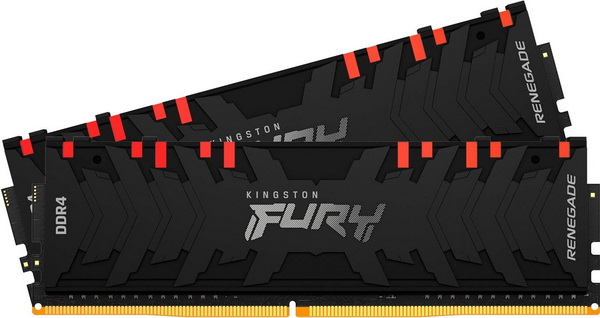
Capacity, speed/frequency, latency, build/component quality and looks, these are the 5 factors consumers and professionals alike weigh when out to get a brand new RAM kit. Still not everyone can always afford to go big and so even though one can easily find even 256GB DDR4 kits in the market today the majority of the consumer market is just going for 16/32GB kits. Now as some of you are already aware recently Kingston sold their HyperX subsidiary/brand to HP and so since they no longer had a gaming oriented DDR4 line to call their own in the market the very first order of business was to release some under a new brand name, FURY. Well, today's review is about the FURY Renegade DDR4 RGB line and more specifically the dual-channel 32GB 3600MHz CL16 kit.
Kingston Technology Company, Inc. is the world’s largest independent manufacturer of memory products. Kingston designs, manufactures and distributes memory products for desktops, laptops, servers, printers, and Flash memory products for PDAs, mobile phones, digital cameras, and MP3 players. Through its global network of subsidiaries and affiliates, Kingston has manufacturing facilities in California, Taiwan, China and sales representatives in the United States, Europe, Russia, Turkey, Ukraine, Australia, India, Taiwan, China, and Latin America. For more information, please call +44 (0)1932 738888 or visit www.kingston.com
The latest FURY Renegade RGB line of DDR4 modules by Kingston is XMP 2.0 certified and is currently available in 8/16/32GB single, 16/32/64GB dual, 32/64/128GB quad and 256GB 8-channel kits (the KF436C16RB1AK2/32 kit was used in this review) with frequencies all the way up to 4600MHz (3000/3200MHZ/3600/4000/4266/4600MHz), CAS latency set as low as 15 (3000MHz CL15 - 3200/3600MHZ CL16 - 4000/4266/4600MHz CL19) and voltages up to 1.5v (3000/3200/3600/4000MHz 1.35v - 4266MHZ 1.4v - 4600MHz 1.5v). Inside the low-profile black heatspreaders HyperX has placed dual rank 8GB D-Die memory chips by SK Hynix (this applies to the model tested today, other models in this line may have memory chips by other manufacturers), Kingston's very own patent-pending infrared sync technology (ensures that the selected RGB effect is in sync with every module of the kit) and a RGB LED bar with a total of 8 effects (controllable by their new FURY™ CTRL software) and full compatibility with all the popular mainboard sync technologies (including ASUS AURA Sync, GIGABYTE RGB Fusion, MSI Mystic Light Sync and ASRock RGB Sync). As always Kingston covers the entire FURY Renegade RGB line of DDR4 RAM with a limited lifetime warranty.
SPECIFICATIONS AND FEATURES

PACKAGING AND CONTENTS
For their new RAM Kingston is using a cardboard box that has a product picture at the front right beneath their logo and above its main features.
Another product picture is placed at the rear right over a sticker with the product serial name and barcode.
Along with the FURY Renegade RAM you're also getting a small FURY sticker and the warranty and installation guide.
ΤΗΕ FURY RENEGADE DDR4 RGB 32GB 3600MHZ CL16

 For their new FURY Renegade RGB line Kingston used black polished aluminum heatspreaders which have their name on one side and a small sticker containing the serial number, frequency, timings and voltage requirement on the other.
For their new FURY Renegade RGB line Kingston used black polished aluminum heatspreaders which have their name on one side and a small sticker containing the serial number, frequency, timings and voltage requirement on the other.
The RGB LED bar covers the entire top of each of the modules and has the brand name printed at the center.
Ι placed the FURY Renegade RGB right next to the Acer Predator Apollo RGB to properly showcase the low-profile heatspreaders (42.2mm top to bottom).
The FURY Renegade RGB modules look great even at default rainbow mode when attached on the EVGA Z590 DARK (unfortunately at this time the FURY CTRL software didn't load properly so i was unable to control the RGB effects - nor showcase it here).
Here you can see information/details on this specific kit via the popular Thaiphoon Burner software.
TEST BED
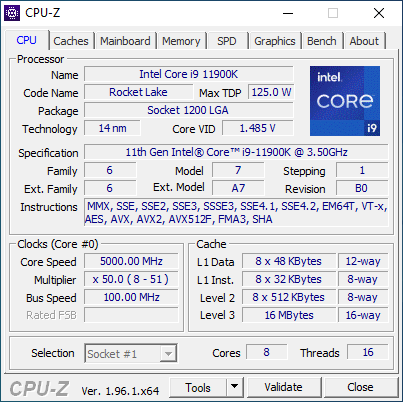

TESTING METHODOLOGY

Thanks to XMP (2.0) profiles the only thing one needs to do in order to run this RAM kit at its advertised frequency, timings and voltages is to choose/enable it from within the Bios and reboot. That being said if you're into overclocking you may not wish to use the main XMP profile but instead to choose your very own frequency, timings and voltages to achieve even higher performance numbers and that's exactly what we'll also be doing during our DDR4 tests. To be more specific aside testing each kit with its XMP profile we will also be upping the voltages (up to 1.4V max – even though most kits can function at higher voltages I don’t recommend doing so) and frequencies (200MHZ increments) until i find the maximum achievable stable frequency. I also thought about upping voltages and reducing timings instead of increasing the frequency of the modules as high as it can go (always stable and without going over 1.4V) but the end results are pretty much identical.
As for the how I'll be testing each DDR4 Quad/Dual-Kit to arrive in the lab well there aren't that many benchmark programs that only test RAM (or at least RAM and CPU without anything else coming into play) but I’ve got most of them and so you will be seeing results from following benchmarking programs, AIDA64 Engineer Edition, Cinebench Release 20, MaxMemm2 (because we are getting low performance numbers this doesn't seem to play well with our test rig - probably because of the X299 architecture - but we decided to include it regardless), Passmark Performance Test 9, Sisoftware Sandra Titanium and WPrime v1.55. All tests are performed on a fresh Windows 10 Pro installation (complete with all updates until the day of this review) and are repeated a total of 6 times after which the average numbers get recorded into the charts.
* In addition to Quad-Channel tests since March 2020 I’ll also be using the brand new I9-9900K+Z390 DARK test rig (check above) for Dual-Channel RAM tests.
** Since May 2020 three game benchmarks (Assassin’s Creed Odyssey, GEARS 5 and Metro Exodus tested on the X299 system at 1080p resolution and with the ASUS ROG RTX2060 OC set at Gaming Mode) have also been added in the charts.
*** In September 2021 i replaced the Intel I9-9900K+Z390 DARK test rig for a brand new Intel I9-11900K+Z590 DARK one (you can access all the Z390 DARK based tests here).
TEST RESULTS - XMP PROFILE / DUAL CHANNEL

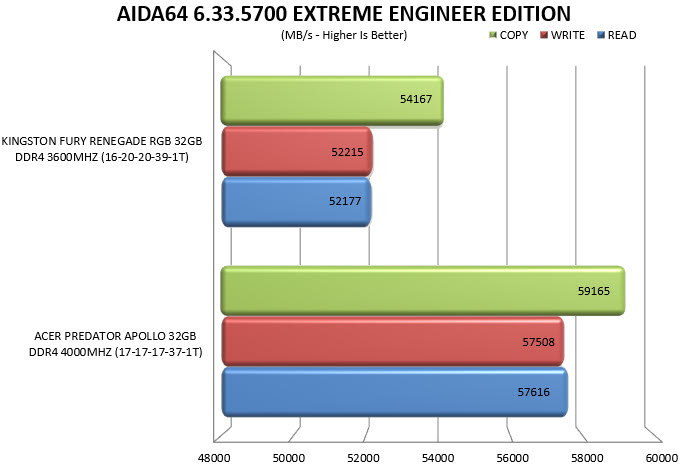





TEST RESULTS - OVERCLOCK / DUAL CHANNEL
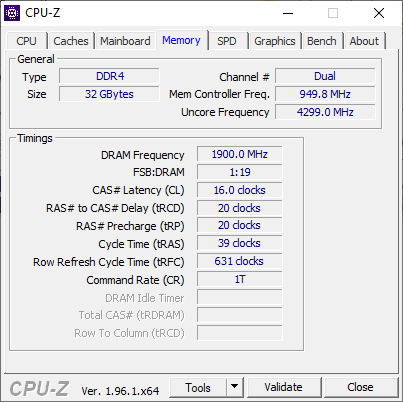
Even though hitting 3800MHZ at CL16 just by upping the voltage to 1.37V was very easy going over that even at 1.4V wasn't possible.






CONCLUSION
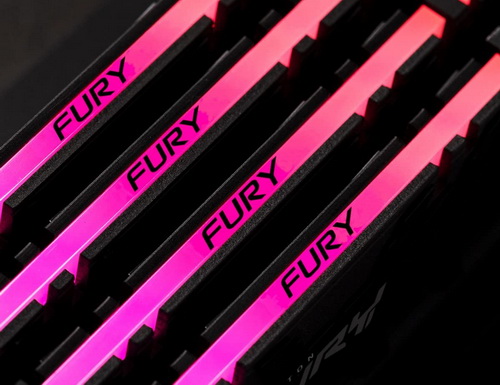
With their HyperX brand Kingston established themselves as one of the leaders in the gaming PC hardware and peripherals industry so now they are starting over again. Still Kingston is one of the oldest companies in the PC industry so it shouldn’t be long before their FURY brand replaces the HYPERX one. Back to the FURY Renegade RGB kit of this review well not much to say, it looks nice, performs just as well and in terms of quality, well it’s a Kingston product covered by a limited lifetime warranty, what more can one ask for? Of course, I would had liked to see more overclock headroom than just 3800MHz at CL16 with 1.37v but even that is not a bad number. Unfortunately, as you’ve already seen I had to start my charts from scratch due to the new Z590 DARK based test rig but it shouldn’t be long before these also get populated.
At USD183.02 inside the USA (Amazon.com) and at 186.96Euros inside the EU (Amazon.de) the FURY Renegade RGB 32GB DDR4 3600MHZ CL16 dual-channel kit (KF436C16RB1AK2/32) is properly priced to compete in the market. Certainly, if you’re looking for something faster and cost is of no concern Kingston even has 5000MHz+ kits in their non RGB FURY line (4600MHz in the RGB one) so there’s also that. Overall, I have no complaints about this FURY Renegade RGB kit since it delivers both in performance and looks which is also why it gets the Golden Award.

PROS
- Build Quality
- Design (Black Aluminum Heat Spreaders)
- Top RGB LED Bar (AURA Sync, GIGABYTE RGB Fusion, MSI Mystic Light Sync & ASRock RGB Sync Compatible)
- FURY CTRL Software (8 Available Lighting Effects)
- Overall Performance (3600MHZ CL16 / Up To 3800MHz CL16)
- Short Heat Spreaders (Reduced Possibility Of Clearance Issues)
- Limited Lifetime Warranty
CONS
- Overclocking Headroom

 O-Sense
O-Sense
















.png)

